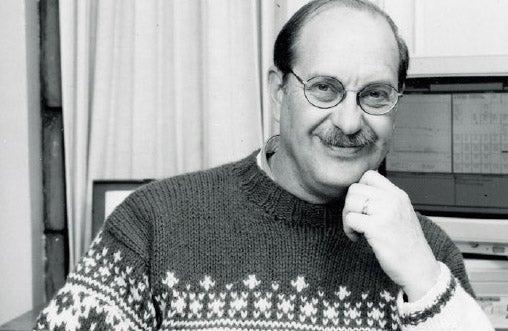Siemann Graduate Fellowships Help Advance Accelerator Research
Four Stanford Students Receive Funding for Work on Novel Accelerators and Beams for SLAC's X-ray Laser
Four graduate students working on innovative accelerator technologies at the Department of Energy's SLAC National Accelerator Laboratory and Stanford University have been awarded Robert H. Siemann Graduate Fellowships in Physics. Established in memory of long-time SLAC accelerator physicist and Stanford faculty member Robert Siemann, the fellowship provides funding to outstanding graduate students doing accelerator research at the lab.
The new fellows are Andrew Ceballos, an electrical engineering PhD student at Stanford; Bryant Garcia, a fourth-year graduate student in physics at Stanford; Siqi Li, a third-year graduate student in physics at Stanford; and Alysson Vrielink, a Stanford student working on a PhD in accelerator physics.
All four are involved in leading-edge advances in accelerator technology, including development of compact accelerators for medical and other applications and crafting better beams of light to power X-ray laser experiments that allow scientists to explore chemistry, materials and biology at the level of atoms and molecules.
'Wafer-scale' Accelerators
Ceballos is part of an international team of researchers working on the creation of an "accelerator on a chip." His research is focused on creating accelerator structures that allow existing laser technology to be optimally applied for accelerating electrons, according to his advisor Olav Solgaard, professor of electrical engineering at Stanford.
"Andrew has already made very significant progress toward the goal of demonstrating wafer-scale electron accelerators. Together with a team of researchers at SLAC and Stanford, he has designed and fabricated the first-generation accelerators and has completed tests that show modest electron acceleration," Solgaard wrote in his nomination letter. "He is a talented and innovative scholar and researcher who has already achieved important results in an early stage of his PhD research."
High Harmonics
Garcia has been working on a method of preparing beams for free-electron lasers (FELs) – such as SLAC's Linac Coherent Light Source (LCLS), a DOE Office of Science User Facility – that could make the light from FELs more stable and its color more pure. The technique, called echo-enabled harmonic generation, could enable new types of experiments, such as more detailed studies of electron motions in molecules. The team just reached a significant milestone with the generation of the highest harmonic yet achieved.
"Bryant Garcia is an excellent hands-on physicist who is also developing his analytic and simulation skills," wrote his advisor Tor Raubenheimer, professor of physics and deputy director of SLAC's Accelerator Directorate.
Shaping Beams
Li is also conducting research aimed at improving beams for LCLS with her advisor Zhirong Huang, associate professor of photon science and applied physics at SLAC. Since the fall of 2014, she has been working on a project called laser transverse shaping to improve X-ray FEL efficiency and performance in collaboration with LCLS. The effort aims to better control LCLS beams at their source.
Li has made admirable progress on several aspects of the beam-shaping project, according to Huang. In addition, she has demonstrated leadership among her peers by starting a journal club and chairing the SLAC Association for Student Seminars. "Siqi is a very motivated graduate student," Huang wrote in his nomination letter. "She leads this student-run organization to build a student community that supports learning, communication skill development and exploration of research and careers."
Terahertz Acceleration
Vrielink's research focuses on another avenue to compact accelerators: Her PhD research involves the development of a new kind of accelerator that could be much smaller because it operates at much higher frequencies. The so-called millimeter-wave or terahertz accelerator structure could have "a profound impact on future accelerator-based machines with applications for light sources, medicine and various industries," according to Vrielink's advisor Sami Tantawi, SLAC particle physics and astrophysics professor.
In his nomination letter Tantawi wrote, "Alysson is a very talented young scientist with a natural ability to lead. She is a perfect candidate for Robert Siemann's fellowship, which was created to honor Bob and leadership in accelerator sciences and related arts…[She] will no doubt leave her print on accelerator technology, an art that she pursues enthusiastically."
Supporting Early Career Accelerator Scientists
A gifted and visionary scientist, Siemann was committed to educating physics students throughout his lifetime. A gift from his widow, Hannah Siemann, endows the fellowships to support outstanding physics PhD students who are conducting research at SLAC or in the fields of high-energy, particle or accelerator physics.
Lia Merminga, associate lab director of SLAC's Accelerator Directorate, said, "We are thrilled that Siemann Fellowships were offered to these four outstanding students this year. Each is making a significant contribution to his or her research area, representing some of the most exciting opportunities for future accelerator physicists and engineers."
Current Siemann Fellows also include James MacArthur and Filippos Toufexis, who were selected in 2015.
For questions or comments, contact the SLAC Office of Communications at communications@slac.stanford.edu.
SLAC is a multi-program laboratory exploring frontier questions in photon science, astrophysics, particle physics and accelerator research. Located in Menlo Park, Calif., SLAC is operated by Stanford University for the U.S. Department of Energy's Office of Science.
SLAC National Accelerator Laboratory is supported by the Office of Science of the U.S. Department of Energy. The Office of Science is the single largest supporter of basic research in the physical sciences in the United States, and is working to address some of the most pressing challenges of our time. For more information, please visit science.energy.gov.






